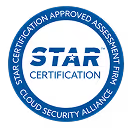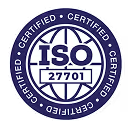Further reading
- A guide to implementing PSA software for services business
- PSA Software vs. Project Management Software: Key Differences
- How PSA helps drive project profitability
- How you can improve project profitability with Rocketlane's PSA capabilities
- Tips for tracking and analyzing billable utilization
Digital transformation – it's the buzzword that has taken the business world by storm. From CEOs to C-suite executives, everyone seems to be talking about it. But what does it really mean, and why does it matter?
In simple terms, digital transformation refers to the integration of digital technology into all aspects of a business, fundamentally changing how it operates and delivers value to customers. It's not just about implementing the latest tool or software. It's a rather holistic transformation that reimagines traditional processes and embraces a digital-first mindset.
Why does digital transformation matter? Well, think of it as the difference between a typewriter and a state-of-the-art laptop. Embracing digital transformation enables businesses to modernize and streamline operations, leading to enhanced efficiency, increased productivity, and improved customer experiences.
With automation software playing a central role in digital transformation, the possibilities are endless. Imagine eliminating the mundane, repetitive tasks that eat away at your workday. Gone are the days of manually updating spreadsheets or chasing down approvals. Automation software takes care of these routine endeavors, allowing you to focus on strategic initiatives that drive growth!
And let's not forget the competitive advantage digital transformation brings. In today's fast-paced, technologically driven world, businesses that fail to adapt and evolve risk being left behind. By embracing digital transformation, companies can stay ahead of the curve, delivering innovative solutions and meeting ever-changing customer expectations.
So, whether you're a small start-up or a multinational corporation, digital transformation matters. It's not just a passing trend; it's the key to sustainable growth and future success. So, gear up, embrace automation software, and join the digital revolution – your business will thank you for it!
What is automation software?
Automation software refers to a range of tools designed to streamline and automate various tasks and processes in professional services. This software leverages advanced technologies such as artificial intelligence (AI) and machine learning to eliminate manual effort, reduce errors, and enhance productivity. By automating routine and repetitive tasks like data entry, report generation, and document management, professionals can focus on more strategic and client-centric activities.
Moreover, automation software enables improved data accuracy, enables real-time visibility into operations, and facilitates seamless collaboration within teams. With the growing importance of digital transformation in professional services, automation software has become a vital component in driving efficiency, profitability, and ensuring a competitive edge in today's fast-paced business landscape.
Here are some key features of automation software:
1. Project management: Automation software provides a comprehensive project management module that allows professionals to plan, track, and manage projects efficiently. With integrated workflows and customizable templates, project managers can streamline project initiation, define project scope, allocate resources, set milestones, and monitor progress in real time. This level of automation not only improves project execution but also minimizes manual errors and ensures greater accuracy in budgeting and time tracking.
2. Collaboration and communication: Automation software facilitates seamless collaboration and communication among team members and clients. With features like document sharing, task delegation, and client portals, professionals can collaborate in real time, ensuring transparency, enhancing productivity, and fostering stronger client relationships.
3. Resource management: Effective resource management is critical for professional services firms, and automation software excels in this aspect. The software enables businesses to centralize resource data and optimize resource allocation, ensuring that the right person with the right skills is assigned to the right project at the right time. With real-time visibility into resource availability, scheduling conflicts can be minimized, and utilization can be maximized, resulting in greater efficiency in resource planning and improved client satisfaction.
4. Billable utilization: Automation software empowers professional services firms to optimize billable utilization by capturing and managing billable hours accurately. The software automates time tracking, expense management, and client billing, eliminating manual errors and reducing administrative overhead. By ensuring accurate and timely invoicing, firms can improve cash flow, enhance client relationships, and drive profitability.
5. Reporting and analytics: Automation software offers robust reporting and analytics capabilities, providing professionals with valuable insights into project performance, resource utilization, and client profitability. Real-time dashboards and customizable reports enable businesses to monitor key metrics, identify trends, and make data-driven decisions to improve operational efficiency and drive strategic growth.
The future of professional services - more automation
The future of professional services promises a world with higher quality advice, faster service, and overall more value. Much of this will be due to the increasing implementation of professional services automation software. Let’s dig a little deeper into why embracing it's non-negotiable and how it will shape the future of professional services.
Why embracing automation software is non-negotiable
There are several compelling reasons why professional service firms must embrace automation software:
1. Increased efficiency: Automation software can perform routine tasks quickly and consistently. This frees up time for your team to focus on higher-value strategic activities, leading to enhanced productivity.
2. Real-time data accessibility: Automation software can collect and provide access to real-time data. This allows for more informed decision-making, which can significantly aid capacity planning and resource management for effective project delivery.
3. Improved profitability: With boosted efficiency and real-time data, businesses can better optimize their operations. They can maximize billable utilization, reduce overhead costs, and ultimately improve profitability.
But the push for automation isn’t just about benefits within the firm - it's also about meeting rapidly evolving customer expectations. Clients today want faster, more efficient services, and they're more likely to choose firms that leverage the latest technology to deliver that efficiency.
How automation will shape the future of professional services
As automation software becomes more commonplace, it will have far-reaching impacts on professional services. Here are some predictions for the future:
More client-centric services
Automation will enable firms to understand their clients through data analytics better. This increased understanding will allow services to be more tailored to individual clients.
Agile workforce
Automation will shift the workforce from task-focused roles to more strategic roles. This will create a more flexible and agile workforce that can address the complex, strategic needs of clients.
Real-time decision-making
Automation software will ensure round-the-clock data availability. This real-time insight will facilitate immediate decision-making, paving the way for a more proactive approach to managing client needs.
Defining digital transformation in the context of professional services
Digital transformation in professional services revolves around leveraging technology to enhance service delivery along with internal processes. More than just using digital tools, it’s about establishing a culture of innovation and adaptability. This culture embraces new tech to redefine client relations, overhaul business models, and streamline project delivery. More importantly, it entails harnessing data to glean insightful information and foster decision-making.
However, managing this transformation is a challenging feat, calling for astute planning, resource management, and dedication. This is where automation software shines, acting as a force multiplier in implementing digital transformation strategies effectively.
The benefits of digital transformation
Automation software plays a critical role in today's digital transformation efforts. With its wide range of benefits, it enables businesses to enhance their customer experience, increase productivity, and foster greater innovation and agility.
Improved customer experience
By streamlining manual and repetitive tasks, it allows companies to provide faster and more accurate service to their customers. For instance, automating customer support processes can ensure prompt response times, personalized interactions, and efficient issue resolution. This ultimately leads to higher customer satisfaction and loyalty.
Increased productivity
Automation software significantly boosts productivity by automating time-consuming and error-prone tasks. Mundane activities like data entry, report generation, and document management can be automated, freeing up valuable time for employees to focus on more strategic and creative work. With increased productivity, businesses can achieve higher output levels, improved efficiency, and better resource allocation.
Greater innovation and agility
By automating routine tasks, employees have more time and mental capacity to focus on innovation and problem-solving. Automation also enables faster and more efficient decision-making, as real-time data becomes readily available. This empowers businesses to be more nimble and adaptive in responding to market changes and customer demands.
Enhanced cross-functional collaboration
Automation software facilitates seamless integration and collaboration among different systems and departments. By automating complex workflows and data exchange processes, businesses can achieve greater agility, as information flows smoothly across the organization. This fosters cross-functional collaboration, enables faster innovation cycles, and promotes better decision-making.
Key elements of digital transformation
Culture change
One of the fundamental aspects of a successful digital transformation is a culture change within the organization. This involves fostering a mindset of innovation, collaboration, and adaptability. Employees need to be encouraged to embrace new ways of working and be open to change. By creating a culture that promotes innovation, companies can facilitate the acceptance and adoption of automation software, making it an integral part of their digital transformation journey.
Making data-driven decisions
Organizations must harness the power of data analytics to gain insights into customer preferences, market trends, and operational efficiency. Leveraging the capabilities of automation software, businesses can collect, analyze, and interpret vast amounts of data in real-time, enabling them to make informed decisions that drive their digital transformation initiatives.
Embracing new technology
By embracing automation software, businesses can facilitate smoother transitions, improve customer experiences, and gain a competitive edge. With the right tools and mindset, embracing new tech becomes an exciting opportunity to revolutionize operations and pave the way towards a successful digital transformation.
Agile project management
By adopting an agile approach, organizations can break down complex projects into smaller, manageable tasks, allowing for quick iterations and continuous improvement. Automation software facilitates this process by enabling collaboration across different teams and providing real-time visibility into project progress.
How automation software supports digital transformation
Automation of repetitive tasks
One of the key ways automation software supports digital transformation is by reducing manual tasks and freeing up valuable time for your team. Mundane and repetitive tasks can be automated, allowing your employees to focus on higher-value activities that drive innovation and strategic decision-making. This boosts productivity, ultimately increasing your company's billable utilization and ROI.
Operational agility
Automation software streamlines project delivery timelines by managing the project's various stages effectively. Traditional approaches often involve multiple handoffs and paperwork, leading to bottlenecks and delays. But with automation in place, you can digitize workflows and establish a seamless, end-to-end process. This speeds up decision-making, reduces cycle times, and ultimately accelerates your time to market. Whether it's approving purchase orders or handling customer support tickets, automation software ensures smooth and swift operations.
Capacity planning
By automating routine and time-consuming activities such as resource allocation, scheduling, and workload management, professional services firms can free up valuable time and resources, allowing them to focus on more strategic initiatives. With automation software, capacity planning becomes more accurate and efficient. The software analyzes historical data, identifies patterns, and predicts future requirements, enabling organizations to make informed decisions about resource allocation and capacity utilization. This proactive approach allows businesses to manage their workloads better, prevent bottlenecks, and ensure optimal utilization of their resources.
Improved customer-centricity
By leveraging data-driven insights and intelligent algorithms, businesses can personalize their interactions with customers, delivering targeted messages, recommendations, and solutions. With automation, you can engage with your customers in a more personalized and meaningful way, enhancing their experience and building long-lasting relationships.
Improved collaboration
With features like shared calendars, automated notifications, and real-time updates, teams can work together seamlessly, regardless of their physical locations. No more tedious manual tasks that slow down productivity! Automation software ensures smooth workflows and eliminates the risk of human error. So, team members can focus on what matters most – delivering exceptional results and driving digital transformation forward.
Choose the right automation software for digital transformation
Key factors to consider when selecting automation software
Automation software plays a crucial role in driving digital transformation in professional services. It streamlines operations, improves efficiency, and enhances the overall client experience. However, with so many automation software options available in the market, selecting the right one can be a daunting task. To help you make an informed decision, we have identified key factors to consider when choosing automation software for your professional services firm:
1. Scalability
Ensure that the automation software you choose can handle the growth of your business. Consider the number of users, transactions, and processes it can support. Scalability is essential as your firm expands and takes on more clients.
2. Integration capabilities
Professional services rely on various systems, including customer relationship management (CRM), billing, and project management tools. Look for automation software that seamlessly integrates with these existing systems to avoid workflow disruptions and data discrepancies.
3. Customization
Every professional services firm operates differently, so it's important to select automation software that can be easily customized to suit your unique workflows and requirements. This allows you to tailor the software to your specific business needs, ensuring maximum productivity and efficiency gains.
4. Security and compliance
Professional services deal with sensitive client data, making security and compliance a top priority. Choose automation software that offers robust security measures, such as data encryption and role-based access controls. Additionally, ensure that the software complies with industry regulations and standards.
5. User-friendliness
Your employees will be the primary users of the automation software, so it's vital that it is intuitive and user-friendly. Look for software with a clean and organized interface, easy navigation, and clear instructions. A user-friendly system will minimize training requirements and maximize adoption rates.
6. Support and training
Consider the level of support and training provided by the software vendor. Do they offer comprehensive documentation, training resources, and responsive customer support? Ensure that you have access to the necessary resources to maximize the value of the software and address any issues that may arise.
7. Return on investment (ROI)
Ultimately, the automation software you choose should provide a measurable return on investment. Evaluate the potential cost savings, improved productivity, and increased client satisfaction that the software can deliver. Conduct a thorough cost-benefit analysis to ensure that the benefits outweigh the investment required.
Tips for ensuring successful implementation and adoption of automation software
1. Define clear objectives
Start by clearly defining the objectives you aim to accomplish with automation software. Whether it is improving operational efficiency, reducing manual errors, or enhancing customer experience, having well-defined goals will guide your implementation strategy.
2. Involve stakeholders early on
Involving key stakeholders from the outset is crucial for successful implementation. This includes representatives from different departments, such as IT, operations, finance, and customer service. Their input will help identify pain points, prioritize features, and ensure the software aligns with the organization's overall strategy.
3. Choose the right software
Conduct thorough research and evaluate different automation software options to find the one that best suits your organization's needs. Consider factors such as scalability, integration capabilities, ease of use, and vendor reputation. Consulting with industry peers or seeking recommendations can provide valuable insights during the selection process.
4. Plan for change management
Automation software implementation brings changes to processes and workflows. A well-thought-out change management plan is essential to gain buy-in from employees and ensure a smooth transition. Provide clear communication about the benefits of automation, offer training sessions to increase user proficiency, and designate champions to support adoption across the organization.
5. Set realistic expectations
While automation software can bring significant benefits, it is essential to set realistic expectations. Understand that the transition may have some challenges, and it might take time for employees to adapt to the new system. Prioritize continuous improvement and address any issues promptly to encourage long-term usage and adoption.
6. Monitor and measure success
Define key performance indicators (KPIs) to measure the success of automation software implementation. Regularly monitor these metrics and collect feedback from users. Use the data to identify areas for improvement and make necessary adjustments to ensure the software continues to deliver value.
Embark on a digital transformation journey with Rocketlane
In today's fast-evolving professional services landscape, embracing digital transformation is no longer a luxury; it's a necessity. The ability to adapt and thrive in this digital era can be the key differentiator between success and stagnation. Enter Rocketlane – your trusted partner in kickstarting the digital transformation of your professional services.
A unified platform for efficiency
Rocketlane is more than just a software tool; it's a comprehensive platform that streamlines your entire workflow. Whether it's project planning, collaboration with clients, budgeting for resources, or ensuring project profitability, Rocketlane brings everything under one roof. Say goodbye to the hassle of switching between multiple tools and embrace efficiency like never before.
Seamless collaboration
Effective digital transformation requires seamless collaboration, both within your team and with your clients. Rocketlane empowers your team to work collaboratively in real time, ensuring everyone stays on the same page. Moreover, with features like real-time discussions, document sharing, and standardized templates, you can enhance client engagement and create a seamless two-way collaboration experience.
Data-driven decision-making
In the digital age, data is king. Rocketlane equips you with powerful insights and analytics that enable data-driven decision making. From monitoring project costs to analyzing resource availability, Rocketlane provides you with the tools to make informed choices and optimize your operations.
Simplified tech stack
The days of navigating a lab2yrinth of spreadsheets, emails, and communication apps are over. Rocketlane simplifies your tech stack, bringing all your project planning, collaboration, and customer communication into one dedicated tool. This simplification not only boosts productivity but also minimizes the risk of data fragmentation and errors.
Rapid adoption and ROI
Unlike many clunky enterprise software solutions, Rocketlane boasts an intuitive interface that ensures rapid adoption by your team. New team members can get up to speed quickly, reducing onboarding time. Plus, Rocketlane is designed for you to realize a return on investment in a matter of days, not months.
Our customers love us for a reason! Sabina Pons, Operating Partner at Growth Molecules, attests that Rocketlane has helped reduce time-to-value by at least 15%. And we help the Mosaic.tech save about 120 hours every month! Imagine what that kind of boost could do for your organization's bottom line.
So, why wait? Kickstart the digital transformation of your professional services with Rocketlane today. Book a demo or try Rocketlane for free, and experience firsthand how it can empower your team to adapt, thrive, and succeed in the digital era. The future of professional services is digital – and Rocketlane is your ticket to ride the wave of transformation.












